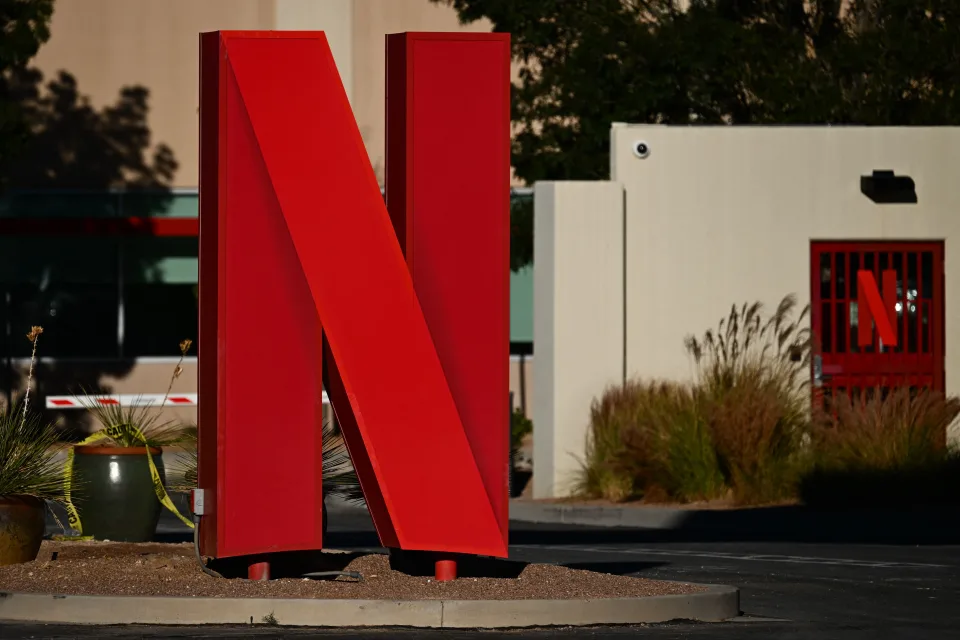Netflix (NFLX) reported a surge in third quarter subscriber numbers of nearly 9 million and announced it will be raising prices in the US, UK, and France, sending its stock higher in after-hours trading Wednesday.
Beginning Wednesday, Netflix said its Basic and Premium plans will now cost $11.99 and $22.99, respectively, in the US. That’s up from the prior $9.99 and $19.99 price points. Netflix’s $6.99 ad-supported plan and $15.49 Standard plan will stay the same price.
“Our starting price is extremely competitive with other streamers and at $6.99 per month in the US, for example, it’s much less than the average price of a single movie ticket,” the company said in its quarterly release. The last time Netflix raised prices was in March 2022.
The stock surged in after-hours trading as a result, up more than as 12%.
Revenue slightly beat the company’s guidance of $8.52 billion to hit $8.54 billion in the quarter, an increase of nearly 8% compared to the same period last year, as the streamer leans on revenue initiatives like its crackdown on password sharing, which rolled out in the US in late May, along with its ad-supported offering.
Netflix guided to fourth quarter revenue of $8.69 billion, slightly below consensus expectations of $8.76 billion.
Earnings per share (EPS) also beat estimates in the quarter with the company reporting EPS of $3.73, ahead of consensus expectations of $3.49. The company reported EPS of $3.10 in the year-ago period.
On the advertising front, Netflix said the adoption of its ads plan continues to grow with membership up almost 70% quarter over quarter with 30% of users signing up to the ad tier in the countries where it’s available. The company said there’s still “more work to do to scale this business.”
Netflix added 8.8 million new subscribers in the quarter, handily beating expectations of 6.2 million. The company said the higher-than-expected growth was “due to the roll out of paid sharing, strong, steady programming and the ongoing expansion of streaming globally.” The company had added just 2.41 million paying users in Q3 2022.
Netflix said it expects fourth quarter subscriber net additions “to be similar” to the third quarter’s results.
Still, despite the surge in paying users, the company was unable to boost average revenue per membership, or ARM.
ARM decreased 1% year over year, in line with the company’s expectations. Netflix blamed the decline on a number of factors, “including a higher percentage of membership growth from lower ARM countries, limited price increases over the past 18 months, and some shift in plan mix.”
Profitability metrics like operating margin and free cash flow, however, steadily beat expectations.
Operating margin hit 22.4% in the quarter, surpassing Netflix’s own projection of 22.2%. The company said it expects full-year operating margins to hit 20% — the high end of its previous forecast between 18% and 20%.
Free cash flow impressed at $1.89 billion, above consensus calls of $1.27 billion. Netflix boosted its full-year free cash flow guidance to $6.5 billion, up from the prior $5 billion, citing the impact of the double Hollywood strikes.
“The last six months have been challenging for our industry given the combined writers and actors strikes in the US,” the company said in its release. “While we have reached an agreement with the WGA, negotiations with SAG-AFTRA are ongoing. We’re committed to resolving the remaining issues as quickly as possible so everyone can return to work making movies and TV shows that audiences will love.”
As Hollywood productions remain shut down amid the actors strike, the company said it expects to spend around $13 billion on content this year before boosting that number to $17 billion next year, assuming the SAG strike is resolved in the near future.
In the meantime, the platform will lean on new programming — such as live events.
Earlier this week, the company confirmed the debut of “The Netflix Cup,” a celebrity golf tournament that will feature athletes from “Formula 1: Drive to Survive” and “Full Swing.” The event will stream live from Wynn Gold Club in Las Vegas on Nov.14.
Outside of content investments, the company said in its shareholder letter that it will plan on “substantial changes for 2024” to its executive compensation plan after shareholders rejected a multi-million dollar executive compensation package earlier this summer.
The company spent an estimated $166 million on its executive pay package last year.

